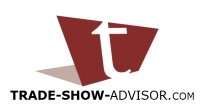Avoid These Trade Show Mistakes
Don't Let Trade Show Mistakes Impact Your Outcomes

Effective exhibiting can contribute substantially to revenue generation. It takes thoughtful planning, focused implementation and timely follow-up to fully realize your sales potential from your event strategy.
Following are some common trade show mistakes you can avoid.
Failing to Craft a Trade Show Plan with Quantifiable Objectives
To ensure success, you must have a detailed event plan that covers:
- Pre-show initiatives
- Activities during the event
- Post-show follow-up
Essential to your plan are specific objectives that describe what you want to accomplish such as leads generated, sales completed, incremental revenue from current customers, etc. See links at the bottom of this page for more information on planning.
Neglecting to Develop a Detailed Trade Show Budget
As part of your planning process, you need to make sure you have a handle on all your projected expenses and forecasted revenue so you can determine a return-on-investment for each show you attend.
Limiting Time to Produce Your Booth, Printed Materials, and Promotional Items
Waiting to the last minute to have your exhibit booth and other items developed is one of the biggest trade show mistakes you can make.
Your image and effectiveness is at stake when you do not allow enough time to produce everything you need for your exhibit.
When things are rushed, mistakes are easily made and corners are sometimes cut. In addition, you may incur significant rush and overtime charges, which can erode your profit.
Find out how long it takes to produce each item in your booth and allow adequate time, including shipping.
Not Training Booth Staff
Your trade show results are directly tied to the effectiveness of the people who work your booth. They are a direct reflection of your company and its quality, culture and service.
Be sure they are fully trained on the objectives of each show as well as:
- The specific sales message that must be consistently delivered
- Which high-opportunity prospects and customers will be at the event
- How to perform effective product demonstrations
- How to engage booth visitors and collect lead information
- What materials to give visitors and how you want it done
Collecting Inconsistent or Incomplete Lead Information
Your booth staff must be well trained on how to quickly and consistently assess, through two-way dialogue, visitors’ interests, needs, buying power, and decision-making ability.
This is essential to determining if your product is a good fit and if a booth visitor is a “low,” “medium” or “high” opportunity prospect.
As a result, a lead tracking system based on your product or service must be in place for collecting, tracking and following-up on all leads with an appropriate action plan.
Waiting Too Long or Not Doing Lead Follow-up
Ignoring your trade show leads once you return from your event is like leaving money on the table.
Within a day (preferably) and a week at the most, you need to follow-up with a phone call, sales packet, personal letter and/or hand-written note to turn ‘warm” leads into “hot leads… and eventually into buying customers.
Make sure you have detailed your follow-up strategy in your initial trade show plan and have everything you need for immediate implementation upon your return.
Failing to Complete a Show Evaluation
To ensure you hedge against any trade show mistakes in the future, always complete a show evaluation that includes quantifiable measures such as goal attainment, budget/expense reconciliation, and a return-on-investment calculation.
In addition, discuss qualitative factors with your booth staff that may impact how and where you exhibit in the future.
Related Information - Trade Show Mistakes
Trade Show Planning
Trade Show Promotions
Event Planning Timeline
Effective Trade Show Staffing
Exhibit Space Requirements
Trade Show Resources
High Impact Trade Show Graphics
Share Success Tips Do you have a great exhibiting or marketing tip that enhanced
your trade show results? Share it here! |



